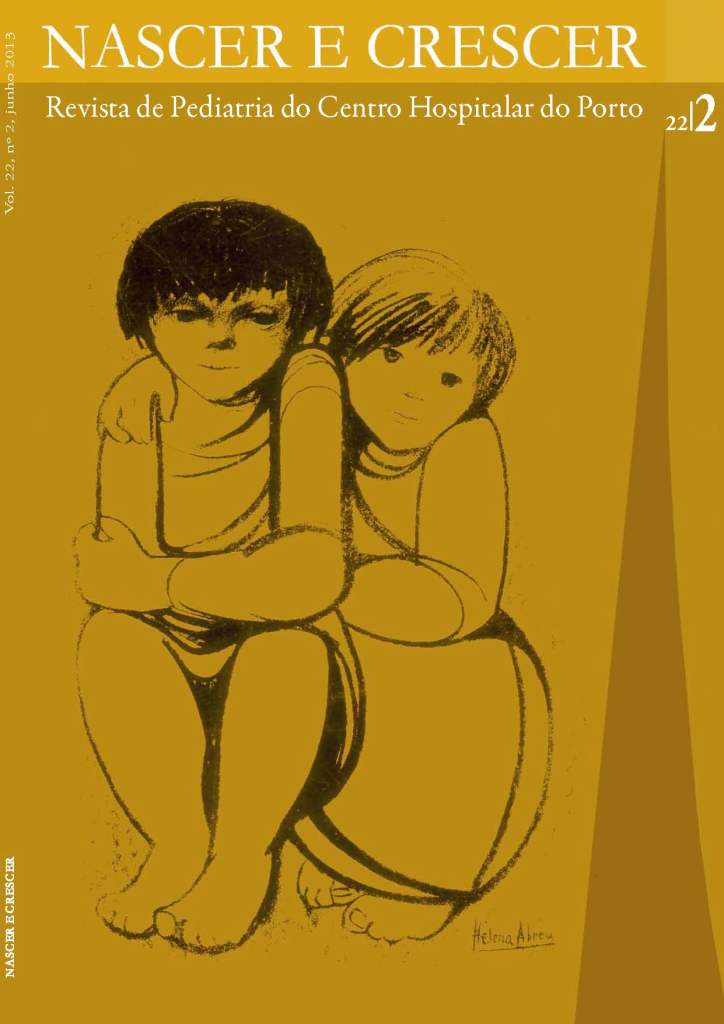MULTICYSTIC ENCEPHALOPATHY – CONSIDERING TWO CASE REPORTS
DOI:
https://doi.org/10.25753/BirthGrowthMJ.v22.i2.10768Keywords:
Epilepsy, infant, multicystic encephalopathyAbstract
Introduction: Multicystic encephalopathy is a rare disease where the brain parenchyma is replaced by cysts of different sizes. It has been associated to multiple causes: foetal transfusion in monozygotic twin pregnancy, neonatal encephalopathy, central nervous system infections, stroke, trauma, severe maternal hypotension, among others. The common factor linking all of these conditions is the occurrence of severe cerebral hypoxia. The diagnosis is based on neuroimaging and cranial ultrasonography is considered the first-line exam. It is a disease with poor prognosis and in most cases it develops into severe progressive neurological dysfunction to death.
Cases Report: The authors report two cases of multicystic encephalopathy, both with early neonatal presentation but distinct.
Discussion/Conclusion: The knowledge of this entity, its risk factors and its important morbidity and mortality in children are essential for the early diagnosis and appropriate approach.
Downloads
References
Low C, Garzon E, Carrete Jr H, Vilanova LC, Yacubian EM,
Sakamoto AC. Early destructive lesion in the developing brain.
Clinical and electrographic correlates. Arq Neuropsiquiatr
; 65:416 -22.
Aicardi J. Disease of the nervous system in childhood. 1st ed.
London/Oxford/New York: Mac Keith Press, 1992: 21 -2.
Frigieri G, Guidi B, Zaccarelli SC, Rossi C, Muratori G, Ferrari
F, et al. Multicystic encephalomalacia in term infants. Childs
Nerv Syst 1996; 12:759 -64.
Orejón G, Beato FM, Heras RS, Molina MM. Encefalomacia
multiquística. Revisión de 19 casos. An Esp Pediat 1997;
:33 -9.
Gathwala G, Magu S, Khosla A. Multicystic Encephalomalacia.
Indian J Pediatr 2003; 70:443 -5.
Cowan F, Rutherford M, Groenendaal F, Eken P, Mercuri E,
Bydder GM, et al. Origin and timing of brain lesions in term
infants with neonatal encephalopathy. The Lancet 2003;
:736 -42. Disponível em: www.thelancet.com/journals/
lancet/article/PIIS0140 -6736(03)12658 -X/fulltext
García -Alix A, Biarge MM, Arnaez J, Valverde E, Quero J.
Asfi xia intraparto y encepalopatía hipóxico -isquémica.
Protocolos Diagnóstico Terapéuticos de la Asociación
Española de Pediatria: Neonatología. Protocolos actualizados
al año 2008. Disponível em: www.aeped.es/sites/default/fi les/
documentos/26.pdf
Vries LS, Jongmans MJ. Long -term outcome after neonatal
hypoxic -ischaemic encephalopathy. Arch Dis Child Fetal
Neonatal Ed 2010;95:F220 -4.
Chang Y, Soffer D, Horoupian DS, Weiss LM. Evolution of
post -natal Herpes simplex virus encephalitis to multicystic
encephalopathy. Acta Neuropathol 1990; 80:666 -70.
Gray PH, Tudehope DI, Masel J. Cystic encephalomalacia
and intrauterine herpes simplex virus infection. Pediatr Radiol
; 22:529 -32.
Prager A, Roychowdhury S. Magnetic resonance imaging of
the neonatal brain. Indian J Pediatr 2007; 74:173 -84.
Matlung SE, Bilo RA, Kubat B, van Rijn RR. Multicystic
encephalomalacia as an end -stage fi nding in abusive head
trauma. Forensic Sci Med Pathol 2011; doi: 10.1007/s12024-
-011 -9236 -7.
Gupta RK, Pant CS, Sharma A, Khalilullah A. Ultrasound
diagnosis of multiple cystic encephalomalacia. Pediatr Radiol
; 18:6 -8.
Stannard MW, Jimenez JF. Sonographic recognition of
multiple cystic encephalomalacia. AJR Am J Roentgenol
; 141:1321 -4.
Downloads
Published
How to Cite
Issue
Section
License
Copyright and Authors' Rights
All articles published in Nascer e Crescer - Birth and Growth Medical Journal are Open Access and comply with the requirements of funding agencies or academic institutions. For use by third parties, Nascer e Crescer - Birth and Growth Medical Journal adheres to the terms of the Creative Commons License "Attribution - Non-Commercial Use (CC-BY-NC)".
It is the author's responsibility to obtain permission to reproduce figures, tables, etc. from other publications.
Authors must submit a Conflict of Interest statement and an Authorship Form with the submission of the article. An e-mail will be sent to the corresponding author confirming receipt of the manuscript.
Authors are permitted to make their articles available in repositories at their home institutions, provided that they always indicate where the articles were published and adhere to the terms of the Creative Commons license.


